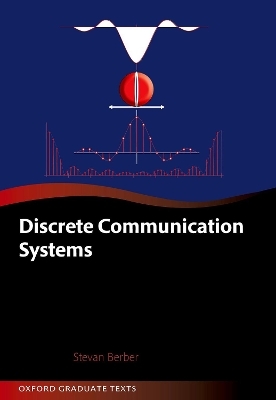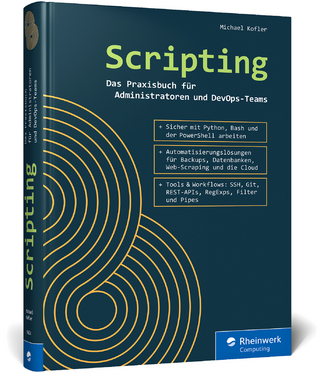
Discrete Communication Systems
Oxford University Press (Verlag)
978-0-19-886079-2 (ISBN)
This is the first textbook which presents the theory of pure discrete communication systems and its relation to the existing theory of digital and analog communications at a graduate level.
Based on the orthogonality principles and theory of discrete time stochastic processes, a generic structure of communication systems, based on correlation demodulation and optimum detection, is developed and presented in the form of mathematical operators with precisely defined inputs and outputs and related functions. Based on this generic structure, the traditionally defined phase shift keying (PSK), frequency shift keying (FSK), quadrature amplitude modulation (QAM), orthogonal frequency division multiplexing (OFDM) and code division multiple access (CDMA) systems are deduced as its special cases. The main chapters, presenting the theory of communications, are supported by a set of supplementary chapters containing the theory of deterministic and stochastic signal processing, which makes the book a self-contained presentation of the subject.
The book uses unified notation and unified terminology, which allows a clear distinction between deterministic and stochastic signals, power signals and energy signals, discrete time signals and processes and continuous time signals and processes, and an easy way of understanding the differences in defining the correlation functions, power and energy spectral densities, and amplitudes and power spectra of the mentioned signals and processes.
In addition to solved examples in the text, about 300 solved problems are available to readers in the supplementary material that aim to enhance the understanding of the theory in the text. In addition, five research Projects are added to be used by lecturers or instructors that aim to enhance the understanding of theory and to establish its relation to the practice.
Stevan Berber received his PhD in electrical engineering from the University of Auckland, New Zealand, where he is currently an associate professor. He has taught undergraduate and graduate courses including communication systems, information and coding theory, stochastic signal processing, sensor and computer networks, and advance digital systems design. He has been leading or involved in a large number of research and industry projects related to these subjects. He held positions of a visiting scholar at the University of Sydney, visiting professor at the NUST University in Nanjing, China, visiting professor at the University of Novi Sad, Serbia, and a guest professor at universities in Greece, Spain, Korea and England. He served as an editor and a reviewer for leading journals and conferences in his field.
1: INTRODUCTION TO COMMUNICATION SYSTEMS
2: ORTHOGONAL SIGNALS AND ORTHOGONALIZATION PROCEDURE
3: DISCRETE TIME STOCHASTIC PROCESSES
4: NOISE PROCESS IN DISCRETE COMMUNICATION SYSTEMS
5: DISCRETE COMMUNICATION SYSTEM OPERATION
6: DIGITAL BANDPASS MODULATION METHODS
7: DISCRETE BANDPASS MODULATION METHODS
8: ORTHOGONAL FREQUENCY DIVISION MULTIPLEXING AND CODE DIVISION MULTIPLE ACCESS SYSTEMS
9: INFORMATION THEORY AND CODING
10: DISCRETE COMMUNICATION SYSTEMS DESIGN
11: DETERMINISTIC CONTINUOUS TIME SIGNALS AND SYSTEMS
12: TRANSFORMS OF DETERMINISTIC CONTINUOUS TIME SIGNALS
13: SAMPLING AND RECONSTRUCTION OF CONTINUOUS TIME SIGNALS
14: DETERMINISTIC DISCRETE TIME SIGNALS AND SYSTEMS
15: DETERMINISTIC DISCRETE TIME SIGNAL TRANSFORMS
16: CONCEPT OF DIGITAL FILTERS OPERATION AND DESIGN
17: MULTIRATE DISCRETE TIME SIGNAL PROCESSING
18: MULTIRATE FILTER BANKS
19: CONTINUOUS TIME STOCHASTIC PROCESSES
| Erscheinungsdatum | 20.09.2021 |
|---|---|
| Reihe/Serie | Oxford Graduate Texts |
| Zusatzinfo | 584 line drawings and halftones |
| Verlagsort | Oxford |
| Sprache | englisch |
| Maße | 176 x 252 mm |
| Gewicht | 2054 g |
| Themenwelt | Mathematik / Informatik ► Informatik ► Netzwerke |
| Naturwissenschaften ► Physik / Astronomie ► Elektrodynamik | |
| Technik ► Nachrichtentechnik | |
| ISBN-10 | 0-19-886079-X / 019886079X |
| ISBN-13 | 978-0-19-886079-2 / 9780198860792 |
| Zustand | Neuware |
| Haben Sie eine Frage zum Produkt? |
aus dem Bereich


